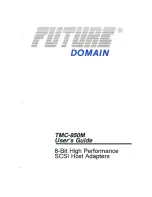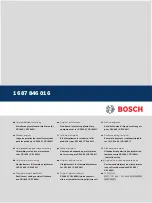
14
GLOSSAIRE
78
14
Glossaire
802.x
IEEE standards defining local network protocols.
ADAPTER
A hardware interface between a device and the network. In this case they are PLCnet TM adapters.
IP ADDRESS
Address assigned to a server in the form w.x.y.z (w, x, y, z ranging from 0 to 255 inclusive). IP
addressing is used identify and locate any device connected to the Internet. In a larger sense on
local networks, the IP address enables the devices to communicate with one another.
MAC ADDRESS
The hardware address of a device connected to a shared medium.
CSMA/CA
(Carrier Sense Multiple Access with Collision Avoidance)
Method of accessing a local network, in which a device that wants to transmit verifies that another
device is not already transmitting at the same time (in which case a transmission would generate
a collision). In the collision avoidance (CA) method, verification takes place prior to transmission,
in order to avoid a collision. This method is effective if the time allocated is short compared to the
packet length, and if there are a small number of stations.
CSMA/CD
(Carrier Sense Multiple Access with Collision Detection)
Method of accessing a local network, in which a device that wants to transmit verifies that ano-
ther device is not already transmitting at the same time (in which case a transmission would
generate a collision). During the transmission the device checks for collisions. If a collision is
detected, the device transmits its message again after waiting for a random interval.
DHCP
(Dynamic Host Configuration Protocol)
This is a protocol that assigns a network configuration dynamically when a computer connects
to the network. You simply tell the computer to find an IP address by DHCP. This simplifies the
network administration.
ETHERNET
Local network standard designed originally by Xerox, DEC and Intel, today standardised by ISO.
It normally functions at 10 Mbps (Mbits per second) using coaxial cabling, bus topology and
CSMA-CD.
HUB
Multi-repeater : hardware/software unit linking a number of stations to a local network. A hub is
the central signal distributor, to which all the devices of a local network are connected. The hub
synchronises and retransmits data signals as a repeater, but also has other capabilities such as
network management. A hub usually has multiple ports in order to link several devices, creating
a star topology.
IEEE
(Institute of Electrical and Electronic Engineers)
US Association of Electrical and Electronic Engineers that plays an important role as a forum for
research and discussion on standardization. It played an important role in standardizing local
networks, with standard 802.3 (Ethernet), 802.4 (token bus) and 802.5 (token ring). IEEE web-
site : http ://www.ieee.org
Содержание PLA200
Страница 65: ...12 MOUNTING KIT 65 12 Mounting Kit Wall Mount Optional 35 mm DIN Rail kit ref KIT35 A ...
Страница 74: ...13 DATA SHEETS 74 3 1 Global admin ...
Страница 75: ...13 DATA SHEETS 75 3 2 Product selection ...
Страница 76: ...13 DATA SHEETS 76 3 3 Test ...
Страница 77: ...13 DATA SHEETS 77 3 4 Monitoring ...



































